
The first time I ever saw Lazair fly — a fly-in at the Tullahoma Airport, as I recall — a then-young Peter Corley flew the lightweight aircraft as though he was the pilot of a military fighter of the day. He pushed the sleek machine with the whining engines as he looped and rolled the machine with such apparent ease. At this early time of development for these aircraft, such maneuvers in what we called an ultralight were very unusual. To say either Peter or Lazair was unusual proved something of an understatement. Lazair was, and remains, one of the most unorthodox aircraft of any kind. Several reasons stand out to define its uniqueness. These differences included: an inverted-V tail, said to be the most efficient tail planform; twin engines (the tiniest ones imaginable); an aluminum structure not based solely on round tubing; and see-through wing and tail coverings. All that is just the overview.


 The first time I ever saw Lazair fly — a fly-in at the Tullahoma Airport, as I recall — a then-young Peter Corley flew the lightweight aircraft as though he was the pilot of a military fighter of the day. He pushed the sleek machine with the whining engines as he looped and rolled the machine with such apparent ease. At this early time of development for these aircraft, such maneuvers in what we called an ultralight were very unusual.
To say either Peter or Lazair was unusual proved something of an understatement. Lazair was, and remains, one of the most unorthodox aircraft of any kind. Several reasons stand out to define its uniqueness.
These differences included: an inverted-V tail, said to be the most efficient tail planform; twin engines (the tiniest ones imaginable); an aluminum structure not based solely on round tubing; and see-through wing and tail coverings. All that is just the overview.
The first time I ever saw Lazair fly — a fly-in at the Tullahoma Airport, as I recall — a then-young Peter Corley flew the lightweight aircraft as though he was the pilot of a military fighter of the day. He pushed the sleek machine with the whining engines as he looped and rolled the machine with such apparent ease. At this early time of development for these aircraft, such maneuvers in what we called an ultralight were very unusual.
To say either Peter or Lazair was unusual proved something of an understatement. Lazair was, and remains, one of the most unorthodox aircraft of any kind. Several reasons stand out to define its uniqueness.
These differences included: an inverted-V tail, said to be the most efficient tail planform; twin engines (the tiniest ones imaginable); an aluminum structure not based solely on round tubing; and see-through wing and tail coverings. All that is just the overview.
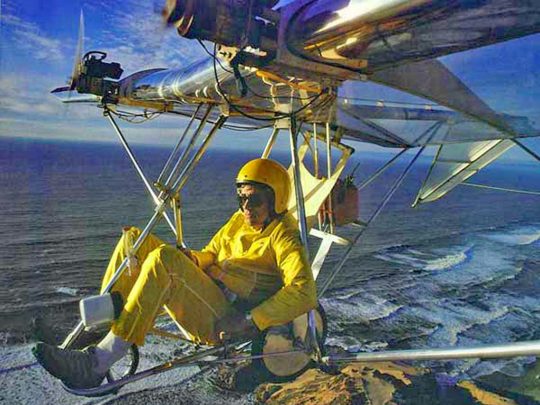 Lazair entered the market in the early 1980s and was sold in kit form. Kits took between 500 and 1,000 hours to build as they were basically a raw materials kit. The fuselage and tail section use aluminum tubing with bolt and rivet construction.
Lazair entered the market in the early 1980s and was sold in kit form. Kits took between 500 and 1,000 hours to build as they were basically a raw materials kit. The fuselage and tail section use aluminum tubing with bolt and rivet construction.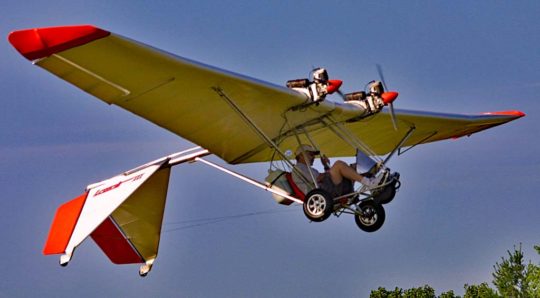 Power was originally supplied by two modified Pioneer Chainsaw engines of approximately 5.5 horsepower each. The Series 2 and 3 models used two, single-cylinder, 9.5-horsepower Rotax engines. These engines were mounted on the leading edge of the wings.
Power was originally supplied by two modified Pioneer Chainsaw engines of approximately 5.5 horsepower each. The Series 2 and 3 models used two, single-cylinder, 9.5-horsepower Rotax engines. These engines were mounted on the leading edge of the wings.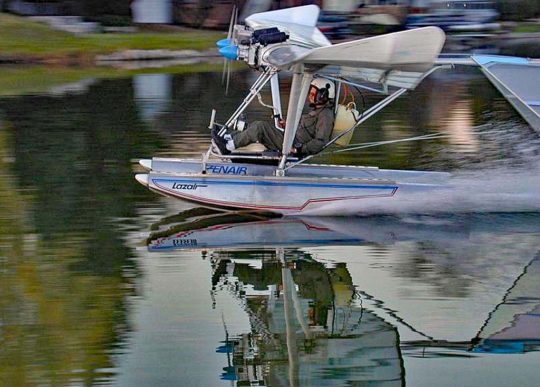 Climb rate on the Lazair Series 2 and 3 ultralights was approximately 450 to 500 feet per minute. Cruise speed was between 35 and 45 miles per hour. Stall is around 25 miles per hour.
Climb rate on the Lazair Series 2 and 3 ultralights was approximately 450 to 500 feet per minute. Cruise speed was between 35 and 45 miles per hour. Stall is around 25 miles per hour.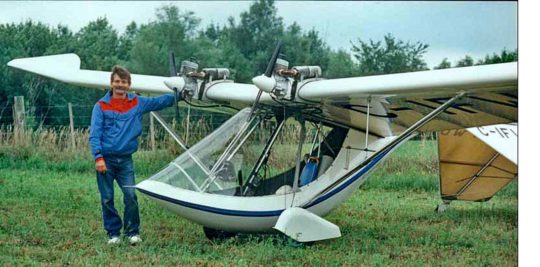 From comments to
From comments to 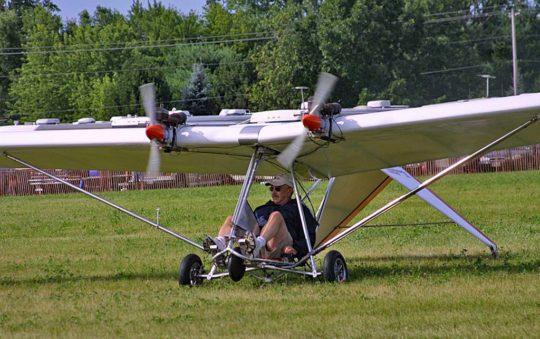 "Pioneer engines are under powered," galactica one noted. "The Rotax 185s are good engines, parts are available, and performance is adequate. They should be upgraded to around 30 horsepower total," the commenter added, as "two engines in the 15-horsepower range would give Lazair proper performance."
The commenter's summary: "Total cost would be around $10,000 to fix it properly." With such an investment, you could claim one of the most intriguing aircraft anyone will see. It will definitely draw looks everywhere you fly Lazair.
"Pioneer engines are under powered," galactica one noted. "The Rotax 185s are good engines, parts are available, and performance is adequate. They should be upgraded to around 30 horsepower total," the commenter added, as "two engines in the 15-horsepower range would give Lazair proper performance."
The commenter's summary: "Total cost would be around $10,000 to fix it properly." With such an investment, you could claim one of the most intriguing aircraft anyone will see. It will definitely draw looks everywhere you fly Lazair.